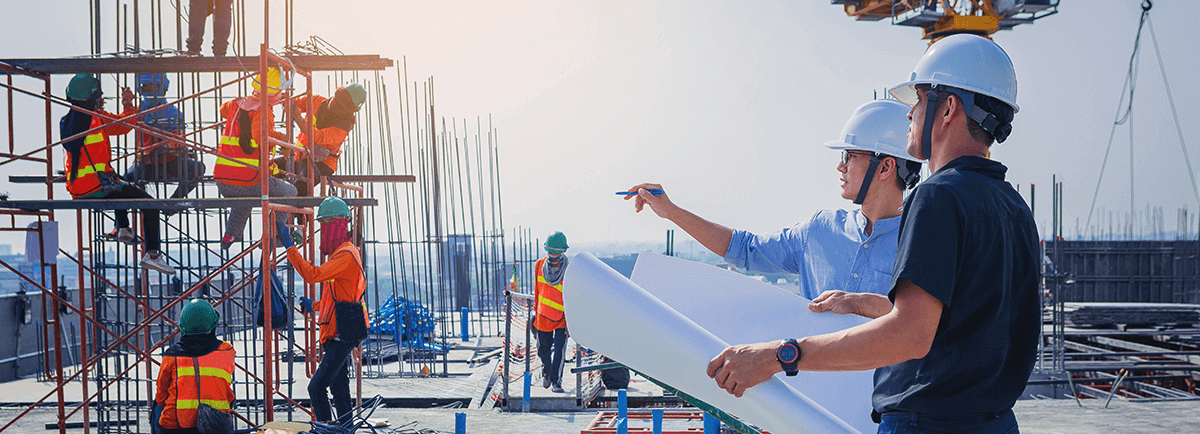
Common Safety Protocols Every Construction Site Should Follow
Safety on a construction site isn’t just a priority—it’s a necessity. With the inherent risks of heavy machinery, high elevations, and unpredictable conditions, having robust safety protocols can mean the difference between a smooth operation and a disastrous incident.
In this blog post, we’ll cover ten essential safety protocols that every construction site should implement. These guidelines will help ensure the well-being of your crew, maintain compliance with regulations, and keep your project running smoothly. Let’s dive into the must-follow safety practices for construction sites.
Here are the ten common safety protocols every construction site should follow:
1. Personal Protective Equipment (PPE)
Every worker on a construction site must wear the appropriate PPE, including hard hats, gloves, safety glasses, high-visibility vests, and steel-toed boots. PPE is the first line of defense against injuries and should be inspected regularly for wear and tear. Ensure that PPE fits properly and is worn at all times when on site.
2. Site Safety Training
Comprehensive safety training is essential for all workers. This training should cover site-specific hazards, proper equipment use, emergency procedures, and the importance of reporting unsafe conditions. Regular refresher courses help keep safety top of mind and ensure new workers are up to speed.
3. Fall Protection
Falls are one of the leading causes of injuries on construction sites. Implementing fall protection measures such as guardrails, safety nets, and personal fall arrest systems is crucial. Ensure that all workers are trained in the proper use of fall protection equipment and understand the importance of using it consistently.
4. Equipment Safety
Heavy machinery and tools must be used safely and correctly. Regular maintenance checks, proper operator training, and ensuring that machinery is turned off when not in use are critical steps. Always follow the manufacturer’s guidelines for safe operation and ensure that only qualified personnel operate heavy equipment.
5. Hazard Communication
Clearly communicate all potential hazards to workers. Use signage, labels, and safety data sheets to inform everyone about hazardous materials and conditions. Ensure that workers know how to read and understand these warnings and are aware of the procedures for handling and reporting hazards.
6. Site Inspections
Regular site inspections help identify and mitigate risks before they become serious issues. Conduct daily inspections and address any hazards immediately. Keep detailed records of inspections and corrective actions taken to ensure accountability and continuous improvement.
7. Emergency Procedures
Establish and communicate clear emergency procedures for different scenarios, such as fires, medical emergencies, or natural disasters. Conduct regular drills so that workers are familiar with the actions they need to take in an emergency. Make sure emergency contact information is easily accessible and updated.
8. Proper Lifting Techniques
Improper lifting can lead to serious injuries. Train workers on the correct techniques for lifting and carrying heavy objects. Provide equipment like dollies or forklifts to assist with heavy loads and encourage workers to ask for help when needed.
9. Housekeeping
A clean and organized site reduces the risk of accidents. Ensure that debris, tools, and materials are stored properly and walkways are kept clear. Regular housekeeping can prevent slips, trips, and falls, and also contribute to a more efficient work environment.
10. Weather Precautions
Weather conditions can significantly impact safety. Implement protocols for extreme weather, such as securing loose materials during high winds or providing hydration and shade during hot weather. Monitor weather forecasts and adjust work plans accordingly to avoid exposing workers to dangerous conditions.
Implementing these measures not only protects workers but also improves productivity and project efficiency. Stay safe, stay compliant, and keep building with confidence.
Ben Johnson is a dedicated Customer Success Executive at Safetymint. With a strong commitment to excellence, Ben works closely with customers to ensure they fully leverage the capabilities of Safetymint to its fullest potential, aiming to significantly reduce or mitigate safety risks and incidents.




